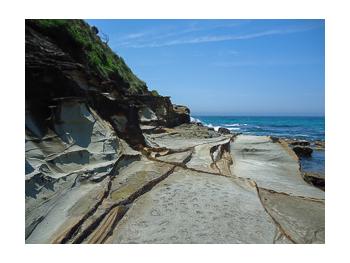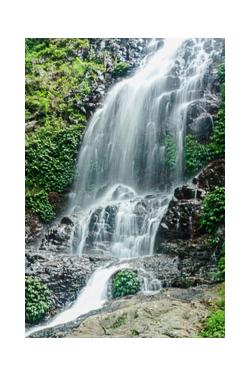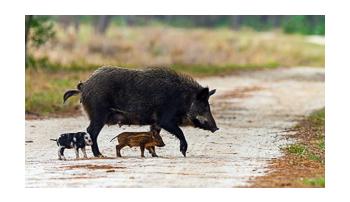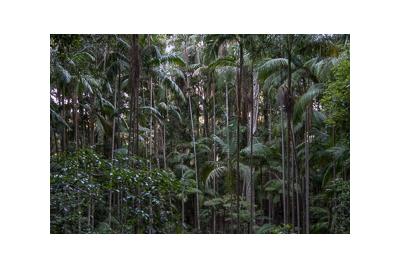
In April 2013, approximately 2,500 concerned citizens marched to the New South Wales (NSW) Parliament House in Sydney, Australia, to voice their opposition to legislation implemented in late 2012 that allowed recreational hunting in local national parks. This public protest was the climax of a battle over recreational hunting on public and private land that has been going on for more than a decade. The first Game and Feral Animal Control Bill passed NSW Parliament in 2002, but 2012 saw the passage of a more radical bill which extended the right of recreational hunters to hunt non-native species in national parks; only 20 species were excluded.i The 2002 and 2012 bills included the usual suspects in Australia: pigs, rabbits, cats, foxes, goats, dogs, and deer. Later amendments included 15 species of native birds that now can be hunted on private land. Just how many hunters would have accessed national parks and their “protected” species is unknown, but there are up to 20,000 licenced hunters in NSW alone.ii Following the public outcry, the NSW Minister for Environment and Heritage released a media statement stipulating that all hunting in national parks in the state would cease, pending a three-year trial.iii Recreational hunters are no longer involved with this process, but the trial involves skilled and experienced volunteer hunters.

Politics
National parks in Australia have a dual purpose. Not only are they sites of public recreation, but they are also considered resources, products of practical use to people. Trees, freshwater, grasslands, deserts, energy from oil and sunlight and wind; they each have economic values based on demand and use. Given their central role in management, state parliaments are the battleground for the fights over national parks. At present, the NSW State Parliament has a specific power arrangement:ix Importantly, there are two members from the Shooters and Fishers Party (SFP) sitting from the 2007 and 2011 elections. Together, they hold the balance of power in the upper house and have had a significant influence on the implementation of the Game and Feral Animal Act. While the SFP has less than four percent of the vote, their balance of power position has meant that the major parties have had a strong interest in securing their support. Both the Australian Labour Party and the Liberal Coalition (the two primary political forces in Australia) secured the interests of the SFP in order to get bills passed in Parliament in 2002; to do otherwise was political suicide. The passing of the 2012 Game and Feral Animal Act has likely secured more votes for the SFP from eager hunters, further fuelling their rise in power.
Conservation Hunting?

Compassionate Conservation
If voices on behalf of native species are barely heard in a multispecies democracy, then it is even harder to hear the voices on behalf of non-native animals. On August 22, one MP was prepared to consider the welfare of non-natives, stating that “introduced species do not feel less pain because they have been labelled pests.”xiv
Compassionate conservation – a synthesis of animal welfare and conservation – is a growing movement. It’s advocates include the Born Free Foundation, and, more locally, the Sydney-based Centre for Compassionate Conservation and THINKK, a think tank for kangaroo welfare. One of the leading theorists of compassionate conservation in Australia, Daniel Ramp, defines the concept quite simply as human empathy toward non-humans.xv It is different from animal rights or liberation because it is driven by the need to eliminate the unnecessary suffering of animals for conservation while incorporating an understanding of invasive species and potential conflicts with local human populations. This movement makes a compelling argument that compassion should not be selective. At the very least, the hunting legislation needs to begin with an appraisal of whether it is really necessary for – or even detrimental to – conservation.
There are two fundamental arguments against conservation hunting: first, killing for conservation is not working; and second, animal welfare principles are rarely considered. In a public presentation at the University of Technology, Sydney, in February 2013, Ramp and biologist Marc Bekoff offered an analysis of the benefits of recreational hunting and weighed them against the animal welfare cost. They referred to past research on feral pig management in the Macquarie Marshes in NSW that found that there needs to be a 70 percent reduction in pig numbers (an estimated 23 million pigs roam the wilds of Australia, and females produce a litter of up to 10 piglets every 12 months) to halt population growth. In 2010-11, despite the ease of acquiring licenses and a campaign to encourage hunting, recreational hunters killed a mere 2,296 pigs in NSW, well below the required numbers to make a difference in resource managementxvi. The larger interest, even in the name of conservation, simply isn’t there.

If it were based on the principles of compassionate conservation, the hunting legislation would need to include the following framework. First, the appropriate word choice for legislation must be used, eliminating the use of feral or game, which have negative connotations, in favor of more compassion terms such as wildlife and species.xviii Second, legal principles should be based on the understanding that animals have interests that are both distinct from but also have much in common with our own, such as a strong interest in life and well-being.[xix] Third, approaches should be based on a precautionary principle that bans harmful practices until proven safe. Finally, an overarching framework needs to be considered to govern human and animal relations based upon shared animal well-being.xx Although humans dominate this democracy; we have dragged the rest of nature along with us, and it is time to include them in our parliament.
A Call for Multispecies Democracy?
Too often, environmental issues are misrepresented in a political framework and research is ignored in favor of powerful voices. Delving into the murky world of politics, what has become of the wildlife? In reports and legislation, they have been reduced to categories of pest, feral, game, native or non-native – words and categories assigned sometimes arbitrarily but often based on subjective definitions. Wildlife voices are silenced. Sometimes, I am struck by my own naïve understanding of democracies. I understand that my country, and the state in which I live, is a democracy formed out of historical circumstances. I also understand that this is the basis for the power struggle over hunting in NSW national parks. Whether I like it or not, these conditions envelop the natural world. But it does not stop me from searching for a multispecies democracy which could incorporate all human and animal voices, and I still aspire to something more than this, where all voices, human and not, are heard.

Some NGOs are agents who bring the voices of animals back in from the cold. The National Parks Association of New South Wales (NPA NSW) is an advocate for biodiversity conservation and the protection of national parks and native wildlife. Kevin Evans is the CEO of this organization, and he was a vocal opponent of this legislation and the possible impacts on native animals. In late 2012, an amendment to the original bill added a list of native birds to be hunted on private land, seen by conservationists as a step toward game bird hunting on protected lands. In June 2013, Evans supported a private members bill in Parliament that attempted to remove the native pink-eared duck from the hit-list. Parliamentary records from that day show how the debate between members of parliament unfolded. They questioned whether this species of duck was a threat to the livelihood of rice farmers. Does it eat grain or is it a carnivore? Does it really matter that it is not on the International Union for the Conservation of Nature (IUCN) threatened species list? The final decision was that this species was an attractive duck but colludes with rebellious species of ducks to plough their way through rice crops. The private members bill failed to pass parliament, and the pink-eared duck is still in danger. With too many duck jokes, the debate in Parliament on this day verged on ludicrous. Nonetheless, it is significant that sympathetic MPs were attempting to speak for wildlife in parliament.
Only time will tell if the principles of compassionate conservation can influence the hunting legislation. A multispecies democracy will only be possible if governance integrates animal welfare principles. But this is a daunting task. The foundation of any legislation governing human and animal relationships must be founded on ethical principles. If there is a philosophy that underpins compassionate conservation, it is the work of Albert Schweitzer: “…reverence for life must be carried to the highest possible pitch, if we are to emerge as ethical beings. And if we are forced to injure and destroy, let us do so with a full sense of responsibility.” xxiv
There is a moral honesty to this philosophy. If one has to kill, then they need to at least be honest about why they are doing so. It is time for the hunting legislation to appraise itself with a full sense of this responsibility.
Examining the hunting legislation in NSW national parks reveals how the historical relationship between the state and federal governments and the management of state assets mean that certain voices are dominant. In democracy, the rule is to stay in power at any cost. The legislation has proven unpopular with civil society and yet the government has persevered with a trial of hunting in national parks with watered-down protections for wildlife and biodiversity. Over the next few years, it will become more apparent what the outcome of this trial will be and whether it will be business as usual for the hunting lobby. We have created a parliament that silences the voices of animals within its hallowed halls. The voiceless need agents to represent them, conservation and animal welfare NGOs that can speak for them. Some may consider their views controversial or even sentimental, but the idea of a democracy is to incorporate all voices no matter how uncomfortable they may make us. If the voices of recreational hunters are a part of a democracy, then all of nature must also be included. A multispecies democracy is where all voices are heard and governance incorporates animal welfare into its practices.
All photos are copyright protected Flickr Creative Commons Attribution License 2.0 Generic. Copyright information for photos are as follows: 1) Burning Palms Beach, NSW, photo courtesy of Brian Giesen; 2) Tristiania Falls, Dorrigo National Park, photo courtesy of Andrea Schaffer; 3) Feral Pigs and Piglets, photo courtesy of Craig O’Neal; 4) Nightcap National Park, photo courtesy of Casper S.
References
i The 2012 bill incorporated legislation from a previous bill of 2009 that had not passed. "Game and Feral Animal Control Act," (Parliament of New South Wales, 2002).; "Game and Feral Animal Control Amendment Bill," (Parliament of New South Wales, 2012).
ii Steve Dunn, Steve Corrigan, and Russell Watkinson, "Governance Review of the Game Council of NSW," NSW Department of Primary Industries (2012).
iii This trial was called the “Supplementary Pest Control” program. It was to take place in 12 National Parks and to be administered by the NSW National Parks and Wildlife Service.
iv Melissa Harper and Richard White, "How national were the first national parks?" Environment in History: International Perspectives, Volume 1: Civilizing Nature: National Parks in Global Historical Perspective, eds. Bernhard Gissibl, Sabine Hohler, and Patrick Kupper (New York City: Berghahn Books, 2012): 50.
v Heather Goodall and Allison Cadzow, "The People’s National Park: Working-Class Environmental Campaigns on Sydney’s Georges River, 1950-67," Labour History, vol. November, no. 99 (2010): 30.
vi Karen Jones, "Unpacking Yellowstone: The American national park in global perspective," in Environment in History: International Perspectives, Volume 1: Civilizing Nature: National Parks in Global Historical Perspective, eds. Bernhard Gissibl, Sabine Hohler, and Patrick Kupper (New York City: Berghahn Books, 2012): 63.
vii Harper and White: 62.
viii Goodall and Cadzow.
ix The parliament of NSW is bicameral, which means it has two houses: Bills have to pass both the upper and lower houses, the legislative assembly and the legislative council. The upper house has 42 seats and acts as one large electorate. Members are elected by proportional representation.
x Dunn, Corrigan, and Watkinson: 2-3, 18.
xi Ibid: 3-4.
xii Ibid: 13-19.
xiii Hayley Stevenson, "Creating a climate of convenience: Australia's response to global climate change (1996-2007)," Energy and Environment, vol. 19, no. 1 (2008): 4.
xiv Refer to Hansard documents for the 22nd August, 2013, p. 22692, Alex Greenwich MP for Sydney.
xv Daniel Ramp, "Bringing Compassion to the Ethical Dilemma in Killing Kangaroos for Conservation," Journal of Bioethical Inquiry,vol.10, no. 2 (2013): 270.
xvi NSW Game Council Report 2007-11, cited by ibid.
xvii The NSW Game Council Report 2007-2011, cited by ibid.
xviii Daniel Ramp et al., "Compassionate Conservation: A paradigm shift for wildlife management in Australia," Ignoring Nature No More: The Case for Compassionate Conservation, ed. Marc Bekoff (Chicago: The University of Chicago Press, 2013), 309.
xix Ibid.
xx Ibid.
xxi Eben Kirksey, "Living with parasites in Palo Verde National Park," Environmental Humanities, vol. 1 (2012): 23.
xxii Ibid: 25.
xxiii Bruno Latour, Politics of Nature: How to bring the sciences into Democracy (Cambridge, MA: Harvard University Press, 2004), 62.
xxiv Albert Schweitzer, RIchard Bartlett, and Charles R. Joy, The animal world of Albert Schweitzer: Jungle insights into reverence for life (Boston: The Beacon Press, 1951), 37.